The Standing Rock Native American Scenic Byway ends at Mandan, ND near Fort Lincoln, so we planned a visit to Abraham Lincoln State Park. The park includes the Fort Lincoln historic site. Within the park, there is a grave marker for Sitting Bull, but we knew he is really buried near Mobridge, SD, so we didn’t seek out the marker. We took a guided tour of Custer’s house (yes, that Custer). Lt. Col. George A. Custer arrived at Fort Lincoln in the fall of 1873 as the leader of six companies of the 7th Cavalry.
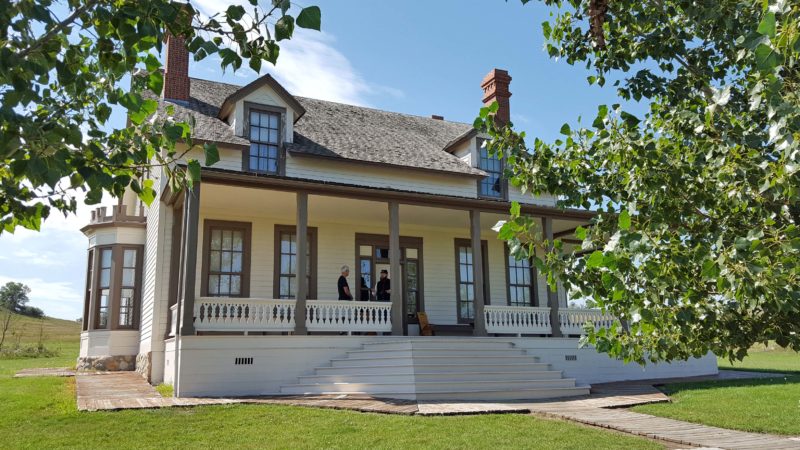
Custer’s house was very nice and homey. That’s Ted and the tour guide on the porch. We were the only two people on this very personal tour.

The parlor (foreground) is just to the left of the front door and opens into the dining room (the bow window in the above picture) and then into the kitchen.
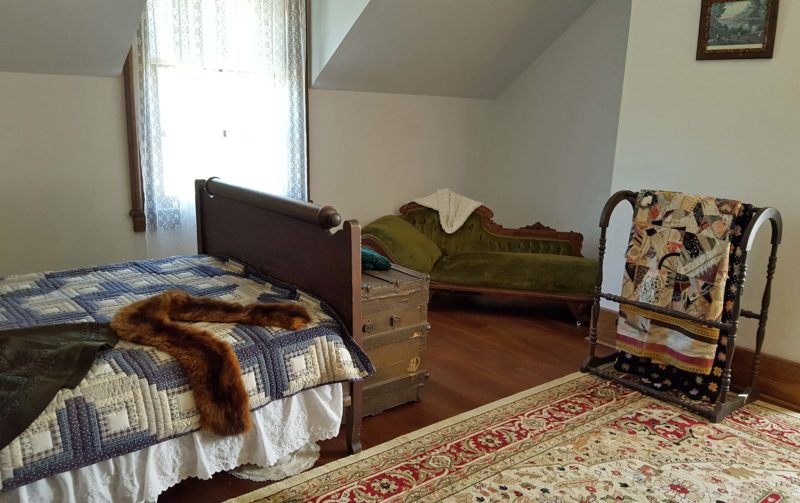
One of the guest bedrooms. There were several guest rooms and bathrooms for the Custers’ visitors to the frontier.
After the house tour, we had just enough time to scurry across the fort grounds to the Mandan On-A-Slant Village for a tour of that area. It is called On-A-Slant because it is located on a slope beside the Missouri River. The historically indigenous Mandan people of the area built this village, which existed as early as 1575. The Mandan tribe was not nomadic, so they built large, permanent earth lodge homes. The nearby city of Mandan, ND is named for this tribe and is populated by present-day Mandans.
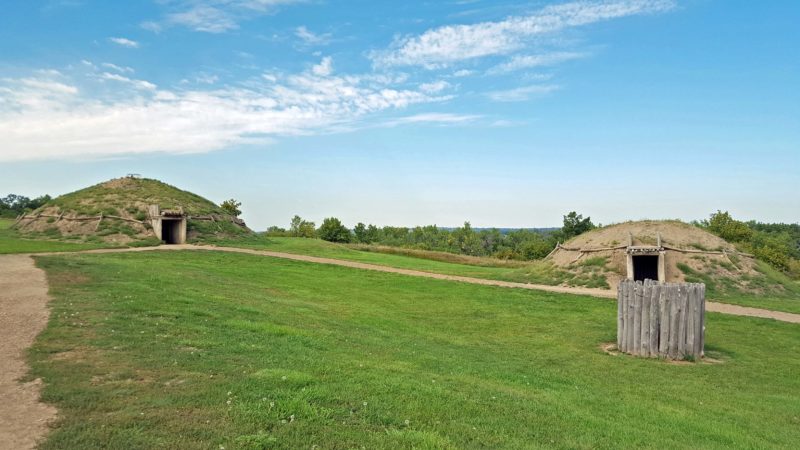
Some of the Mandan earth homes in the village. Multi-generational families lived in these roomy homes. Fifteen people in a dwelling was not unusual.
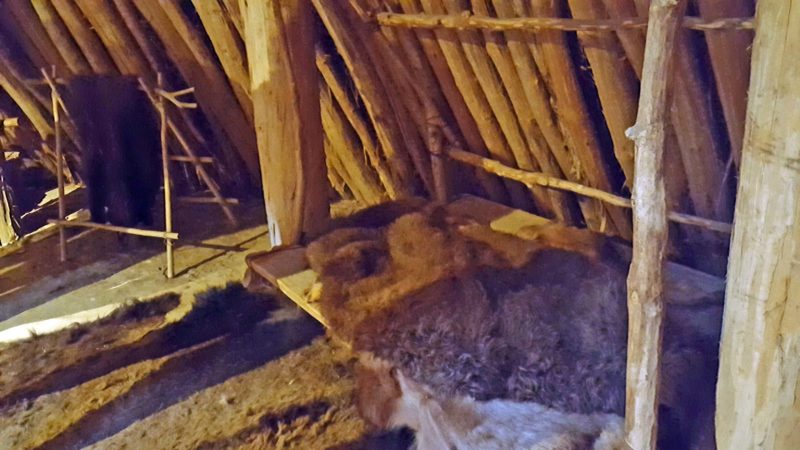
One of the beds that circled the interior of the home. The elderly and the sick slept on these beds; others slept on the floor.

The fire was in the center of the home. An opening in the roof allowed smoke to leave the building. The doorway (dark space on the left) made two turns before entering this room, helping to keep the cold or hot weather outside.
After the tours, we walked around the fort grounds. The fort sits on a hill, so the views are wonderful. This was good for defense in the 1800s; now it provides beautiful vistas for tourists.
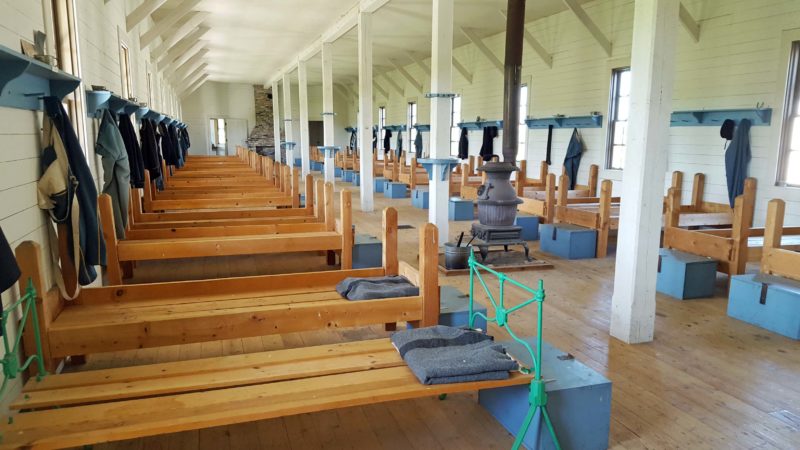
This was one of the soldiers’ barracks. The commanding officer had a separate room of his own at the far end of this room.

The Missouri River borders the fort on the east. (Naturally, Lewis and Clark were here.)

This is one of the lookout towers. Of course, we climbed the stairs/ladders to the top to enjoy the views.
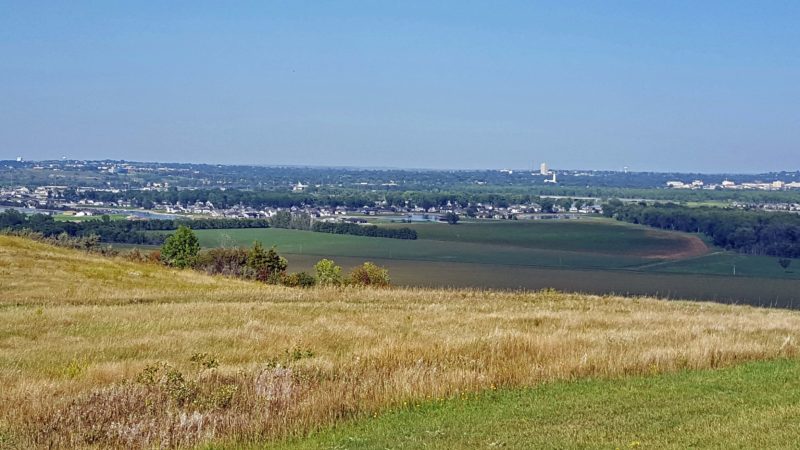
Here’s a view of Bismarck (22 miles away) from near the lookout tower. The tallest building (right center) is the state capitol. The building with the narrow white tower in front of the capitol is a Catholic church.
We’re nearly 20 miles into North Dakota. Woo-ee! We need to go deeper into this previously unexplored (by us) state, so we left Fort Lincoln and headed for Bismarck.